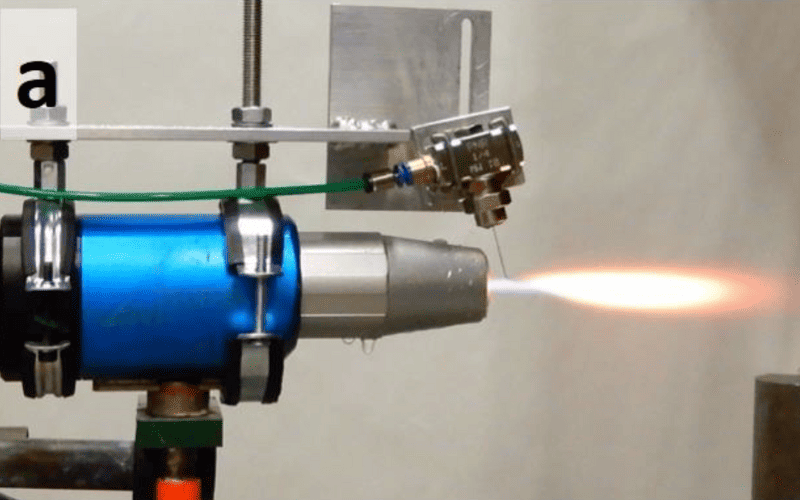September 11, 2019
Radial Injection in Suspension High Velocity Oxy Fuel (S-HVOF) Thermal Spray of Graphene Nanoplatelets for Tribology
Friction is a major issue in energy efficiency of any apparatus composed of moving mechanical parts, affecting durability and reliability. Graphene nanoplatelets (GNPs) are good candidates for reducing friction and wear, and suspension high velocity oxy-fuel (SHVOF) thermal spray is a promising technique for their scalable and fast deposition, but it can expose them to excessive heat. In this work, we explore radial injection of GNPs in SHVOF thermal spray as a means of reducing their interaction with the hot flame, while still allowing a high momentum transfer and effective deposition. Feedstock injection parameters, such as flowrate, injection angle and position, were studied using high-speed imaging and particles temperature and velocity monitoring at different flame powers using Accuraspray 4.0. Unlubricated ball-on-flat sliding wear tests against an alumina counterbody ball showed a friction coefficient reduction up to a factor 10 compared to the bare substrate, down to 0.07. The deposited layer of GNPs protects the underlying substrate by allowing low-friction dry sliding. A Transmission Electron Microscopy study showed GNPs preserved crystallinity after spray, and became amorphised and wrinkled upon wear. This study focused on GNPs but is relevant to other heat- and oxidation-sensitive materials such as polymers, nitrides and 2D materials.
Keywords: S-HVOF; graphene nanoplatelets; radial injection; particles temperature and velocity monitoring; high-speed imaging; tribology; TEM.
Originally published at arXiv (1909.04940)
By F. Venturi, T. Hussain
